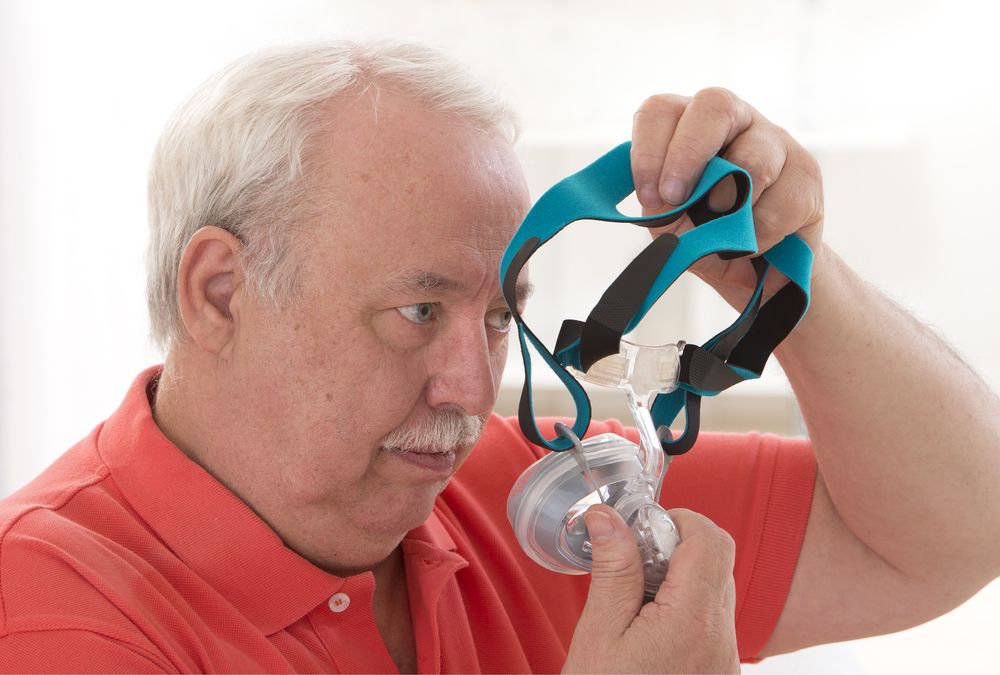- Clinical Technology
- Adult Immunization
- Hepatology
- Pediatric Immunization
- Screening
- Psychiatry
- Allergy
- Women's Health
- Cardiology
- Pediatrics
- Dermatology
- Endocrinology
- Pain Management
- Gastroenterology
- Infectious Disease
- Obesity Medicine
- Rheumatology
- Nephrology
- Neurology
- Pulmonology
Sleep Apnea Increases the Risk of Depression in Men
The association remained statistically significant even after adjusting for age, waist circumference, smoking, and other confounders.
Neurologic brain changes may underlie the association. ©JPC-PROD/Shutterstock.com

Severe obstructive sleep apnea (OSA) and excessive daytime sleepiness are independently associated with an increased risk of depression among men, according to the results of a new cross-sectional, longitudinal, population-based cohort study.
“Clinicians should recognize the risk of OSA in men recently diagnosed with depression, particularly if sleepiness is present,” reported the researchers, led by Carol J. Lang, PhD, of the University of Adelaide in Australia.
There is still considerable uncertainty regarding the observed association. These researchers hypothesized that excessive daytime sleepiness and previously diagnosed and undiagnosed OSA are associated with the incidence and prevalence of depression.
Lang and colleagues conducted telephone interviews asking men if they had ever been diagnosed with sleep apnea with a sleep study. They included men who had negative answers to participate in the study.
Some 1,875 men, ages 35 to 83, were assessed for depression at 2 time points about 5 years apart in the Men Androgen Inflammation Lifestyle Environment & Stress Study. A total of 857 men then underwent at-home polysomnography testing and completed a sleepiness scale questionnaire. The study also included 1,660 men without depression at baseline in the longitudinal analysis of incident depression.
Depression was assessed using the Center for Epidemiologic Studies Depression Scale/Beck's Depression Inventory, and daytime sleepiness was evaluated according to the Epworth Sleepiness Scale.
The results show that previously undiagnosed severe OSA (adjusted OR 1.9) was associated with depression prevalence in the cross-sectional analyses even after adjustment for confounders and excessive daytime sleepiness. Excessive daytime sleepiness (adjusted OR 2.4) was also associated with depression.
“Men with previously undiagnosed OSA and excessive daytime sleepiness had 4.2 times greater odds of depression than subjects without OSA and excessive daytime sleepiness, and 3.5 times greater odds of depression than individuals with either OSA or excessive daytime sleepiness alone,” reported Dr Lang.
This statistical significance remained even after adjustment for age, waist circumference, smoking, relationship status, financial difficulties, erectile dysfunction, and nocturia, she noted.
Both previously diagnosed OSA (OR 2.0) and previously undiagnosed severe OSA (OR 2.9) at follow-up were significantly associated with depression onset over a 5-year period.
Other polysomnography parameters, including oxygen saturation, oxygen desaturation, and arousal index, were not associated with depression prevalence or incidence.
The mechanisms underlying the link between these conditions remain unknown, but they may involve low oxygen levels, arterial inflammatory responses, and neurologic changes in the brain, she said.
The researchers presented the results at the American Thoracic Society annual meeting in Denver on May 19, 2015.
References:
Lang, CJ, Appleton SL, Vakulin A, et al. Obstructive sleep apnea (OSA) and excessive daytime sleepiness (EDS) are independently associated with depression in a community based population of Australian men. Abstract presented at the American Thoracic Society annual meeting in Denver on May 19, 2015. Am J Respir Crit Care Med. 191;2015:A3934.
